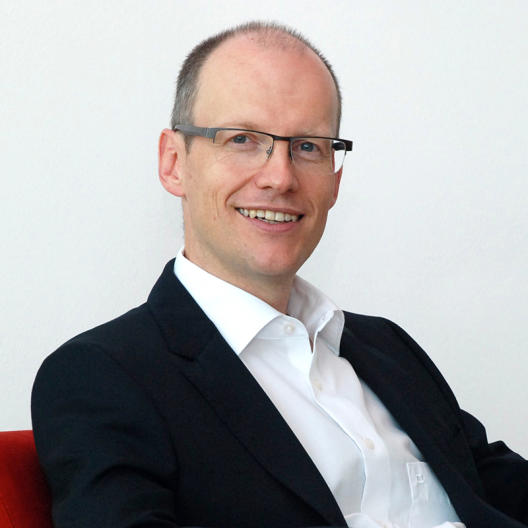“I’m still driven by curiosity”

Prof. Adams, what scientific topic are you working on right now?
We’re interested in blood vessels, in many ways. For one thing, we’d like to find out how blood vessels grow and how different types of cells communicate and connect with each other for this purpose. Also, for some years now we’ve been investigating how blood vessels interact with cells of the surrounding tissue and thereby control bone formation. What interests us specifically are certain capillaries – in other words, the smallest vessels – which stimulate the so-called osteoprogenitor cells, leading to the formation of bones. We look at the capillaries in mice and have already observed that in older animals they have largely disappeared. Conversely, when we again stimulate the capillaries in experiments, bones actually form again. Our findings might explain why osteoporosis occurs in ageing organisms.
What characterizes you personally as a scientist?
I’m full of curiosity. Even as a child I was very interested in nature – I caught tadpoles, for example, and watched how they turned into frogs. Even today, I’m still driven by this curiosity. At the same time, though, it means that I’m never satisfied. Whenever we’ve discovered something exciting and published it, I’ve already long since started thinking about new questions. Science is always changing, and I just think it’s fascinating that so many things can be researched. The real challenge is to focus on certain things and not to spread oneself too thin.
I can also be ambitious outside my scientific work. A few years ago I started to run marathons, and I’m currently training for runs in Marseille and Hamburg.
What is your greatest aim as a scientist?
One of the things I wish for most at the moment is to be able to apply the findings we’ve made regarding blood vessels and bone growth to disease models such as osteoporosis. In Germany, almost ten percent of the population is affected by osteoporosis, and it would be great if, in 10, 15 or 20 years’ time, it turned out that our findings could be applied to help people. If that happened, one of my lifelong dreams as a scientist really would come true.
What’s your favourite toy for research – and what is it able to do?
As a team leader I don’t really work much with equipment anymore, but what has always fascinated me is imaging – for example, all the things we can do with confocal microscopes or two-photon microscopes. I’m fascinated by the possibilities, which we have of using these methods to follow various processes dynamically – in other words, to watch cells migrate over a period of time.
Can you remember your happiest moment as a scientist?
Even as a scientist, of course, there’s a lot of everyday business that has to be attended to. But sometimes there are moments when you really have the feeling to have achieved something important. One special moment was in 2014, when we succeeded in having two important articles on our work published in a major journal. Firstly, it was great to discover new mechanisms regarding bone formation. And the second highlight was that we were the first to see them and were actually able to publish our findings.
And what was your biggest frustration?
In everyday research work you always have to contend with setbacks – for example, when an experiment doesn’t work, or a journal rejects a paper. I can still remember a very frustrating moment when I was still at the beginning of my career. We were in the process of preparing a manuscript when I opened a journal one day and saw a new paper from another team of researchers, which contained virtually all of our results. As a young team leader, when you’re still very concerned about your future, that was like a punch to the stomach. At the same time, though, what I learned from that experience was that you mustn’t let setbacks get you down. We worked on the problem for another year and then we understood it much better in its entirety. As a result, we were able to publish a fantastic story, which had relevance for a human disease.
Which scientific phenomenon still regularly fascinates you today?
There are lots of things which fascinate me and which I follow with great interest. I did my PhD in neurobiology. Although I no longer do research in this area, the way the brain functions is still one of the most fascinating subjects for me. How information is stored and retrieved – these are processes of which we have only a rudimentary understanding today.
What big scientific question would you like to have an answer to?
I’d like to know how blood vessels can be used therapeutically to treat bone loss. Outside my own area of research, I think it’s exciting to combine research into blood vessels with neurobiology. What part do blood vessels play in neurodegenerative diseases? It would be interesting to know whether blood vessels play a causal role in Alzheimer’s disease. And there are initial indications that they might.
How much artistry, creativity and craftsmanship is there in your scientific work?
What’s interesting about our work is actually the fact that a lot of aspects come together. Creativity is very important, but maintaining it is always a challenge because the many deadlines we have can easily strangle creativity. There is one aesthetic aspect that our work has especially when we look at data – for example, in order to compare the images of a genetically modified mouse with those of a control mouse. You need a good eye for this sort of thing – and a lot of experience. As a researcher, you also have to be a good manager – building up a good team, getting a lot of paperwork done, communicating your own results to the outside world. That is actually the big challenge: covering all these areas and being versatile.

